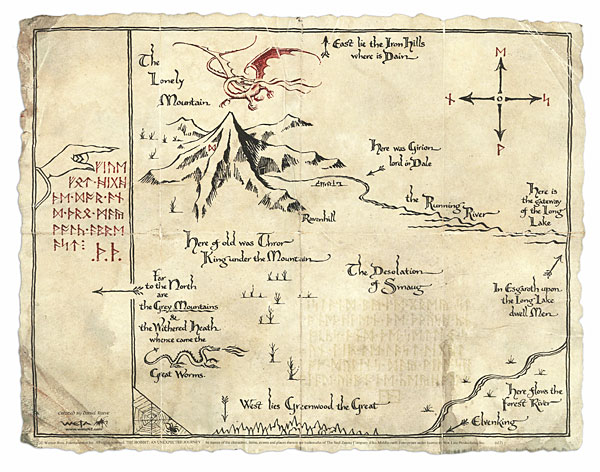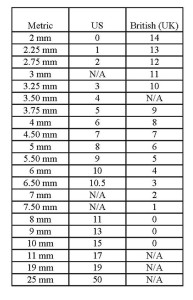“No one can look upon THE NEEDLE, without emotion; it is a constant companion throughout the pilgrimage of life.”
Before you begin any journey, you have to take time to prepare. It is important to collect the necessary supplies and to study the map (It’s best to make sure you understand all the symbols and runes). You wouldn’t want to take a wrong turn in Albuquerque and end up hopelessly lost.
To read our knitting “map”, we have to determine a few things – when the book was written; where it was published; its target audience. These details can help us decipher the outdated text. In the case of The Ladies’ Work-Table Book, the book was published in New York in 1844 with young ladies being the target audience. From this information, we can assume that the patterns will use mostly US terms and measurements but the language will be quite formal, a bit flowery, and somewhat archaic – think Dickens or Austen.
With that in mind, let’s explore the materials and tools recommended for knitting and crochet.
Fibers
Silk, wool, and cotton are the fibers suggested for knitting, crochet, and netting. From the description, it appears that the silks she references are fine gauge silks. I really have no desire to knit a mystery pattern with US0000 needles so for our purposes, we will plan to either use the patterns written for larger yarns or adjust the patterns to different gauge.
The author doesn’t really define sizes on the wool so we will have to do some detective work, basing our choices on the number of stitches, finished size, and needles used. Some of the wools she references are going to be larger gauge yarns so at least we know that all the patterns don’t require teeny tiny yarn.
The cottons she references are in a gauge of 1 – 6. Assuming that the numbering system is similar to that currently used for crochet cotton, the yarns she is referencing would probably be in the light sportweight to heavy laceweight range. If that is the case, it should be relatively easy to find suitable substitutes for the patterns.
The author also mentions beads and silver and gold threads and cords, presumably for embellishment. She doesn’t give any indication of sizes for these so we will have to play this part by ear.
Tools
The author suggests the following tools for knitting:
“Needles of various sizes. The Nos. referred to are those of the knitting needle gauge. Needles pointed at either end, for Turkish knitting. Ivory, or wooden pins, for knitting a biroche. A knitting sheath, &c., to be fastened on the waist of the knitter, toward the right hand, for the purpose of keeping the needle in a steady and proper position”.
In many older knitting books, knitting needles are differentiated from knitting pins. Generally, knitting needles are circular needles while knitting pins are straight needles. However, the author’s usage seems slightly inconsistent with that thinking. Knitting sheaths, for example, are used with straight needles. The needles she recommends for Turkish knitting are obviously double pointed needles. She specifies knitting pins for knitting a biroche, but I have yet to figure out what a biroche is. I suppose it could be an archaic spelling of brioche but I am not sure why she specifies a different needle for it, if she means brioche. Anyone have any clue?
It appears that the author uses the old British needle sizing, though I am still attempting to confirm that. The British scale is reverse of the US scale. In the US scale, needle size increases as the size number increases, hence a US8 needle is larger than a US 1. With the UK system, the size number decreases as the needle gets larger, making a UK8 smaller than an UK1. The chart below compares these sizes (click to see larger version).
Interestingly, she lists no other tools for knitting; not scissors, tapestry needles, or other tools, yet included in the crochet tools, she specifies scissors and rug needles. I’m not certain why she chose to exclude those items in her list. Needless to say, we will need a tapestry needle for weaving in ends, and probably a pair of scissors. Stitch markers will also be handy to have on hand too.
That gets us through the introductory materials. In the next post, we will try to decipher her explanation for stitches and try some of her fancy stitches.
Grab some yarn and get ready to play.


